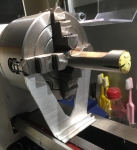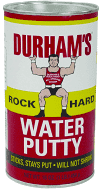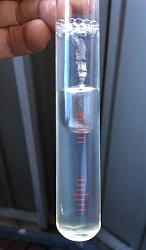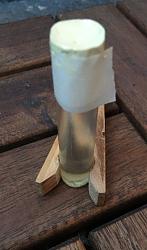re:filling the vial. My choice would be 90% medicinal alcohol. It will take food coloring as a dye, freezing will be non-issue, easily found and handled. Dye somewhat larger quantity than needed with a pinhead to 'spoon' it.
The real trick will be determining what volume is needed for a proper size bubble. Maybe fill it experimentally, hold end shut and horizontal. Once found, up-end and felt-tip mark a graduation on side for later. In regards to filling the tube, my first test would be to submerge it; otherwise a plastic eyedropper.
We have a popular epoxy here called J-B Weld, find an equivalent to seal nib.
Sulfur is low melting point but not getting quick even distribution could crack vial. I guess warming it in hot water is possible. I used plaster of paris for my Starrett level.


 LinkBack URL
LinkBack URL About LinkBacks
About LinkBacks


 Reply With Quote
Reply With Quote










Bookmarks